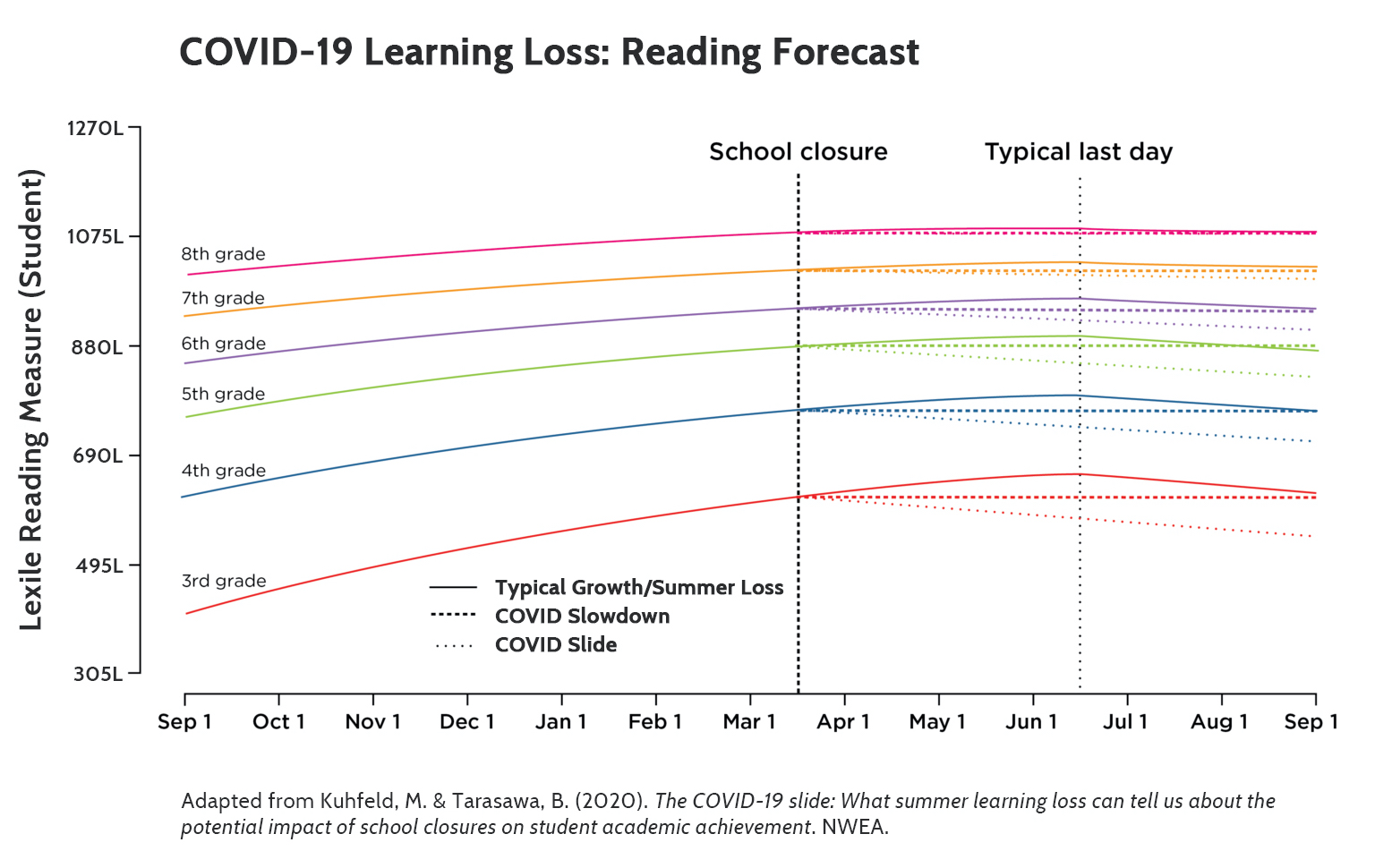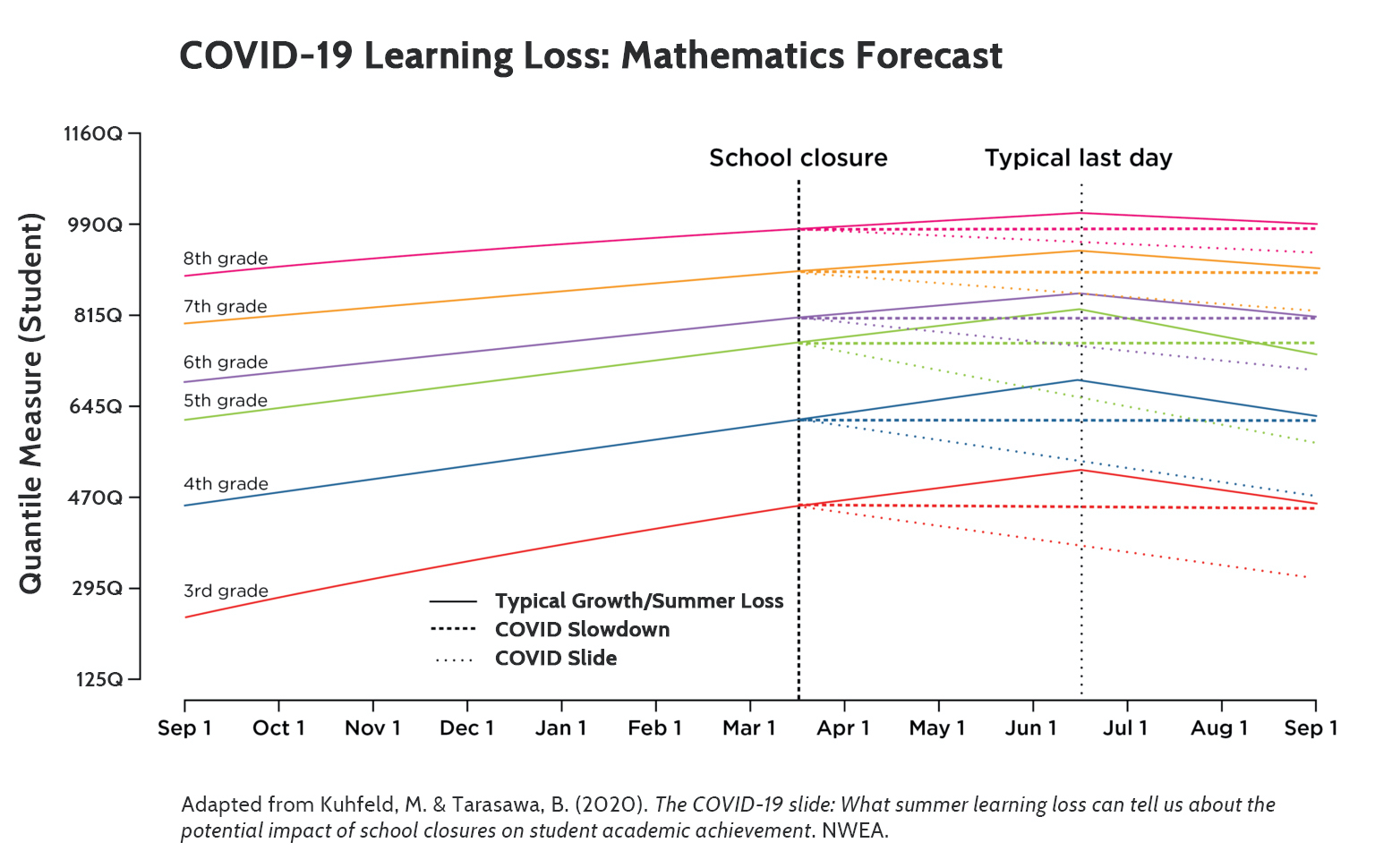Teachers, students and families across the country are working hard to adjust to the strange new reality we all find ourselves in with COVID-19. And within each of these groups, some are flourishing, some are merely treading water, some are struggling mightily and some appear to have vanished entirely.
Change is never easy. And as more than 90% of our nation’s classrooms have made the unexpected and unplanned shift to remote learning, the resilience demonstrated by our teachers and students is impressive. As we all shift to virtual instruction and expanded screen times, one of the first lessons learned in this grand experiment is the importance of a human, personal touch. Educators everywhere are ramping up their efforts to connect with students and families — to praise, inspire, commiserate and sometimes offer that gentle nudge needed to engage more fully. Rightly so. The stakes have never been higher.
Articles in The New York Times and Education Week suggest that one fourth to one third of all students across the country are simply not engaging in their new remote learning environment. Of course, engagement is a difficult concept to pin down in any paradigm, but it presents even more challenge in this context when much simpler concepts such as “attendance” suddenly take on new meanings and questions. It is these unengaged and “vanished students” who keep us up at night.
New research from NWEA helps us to quantify and visualize the potential learning loss that may occur by the time students would typically return to school in the fall. Since NWEA’s MAP scores (RIT) have been linked to our metrics, we were able to re-express these scores in Lexile® and Quantile® measures. One can see how profound the impact on students’ learning is, especially at the lower grades. For example, in the figure below a third grade student who has a Lexile reading measure of 555L after a combination of summer learning loss and school closure due to COVID-19 will enter fourth grade and be presented texts with reading demands ranging from 740L to 940L. Reading demands at each grade level are available here. This student’s reading ability (555L) and the text demands of fourth grade reading materials (740L to 940L) represents a gap between 185L to 385L. With a gap this large between a student’s reading ability and the types of texts they will encounter in the next grade level, clearly this student will need extra resources, support and time to catch up. But, with these ranges and the Lexile measures of individual readers in hand, teachers can plan the instruction and necessary scaffolding to help students engage with texts this far above their independent reading range — be they scaffolds to unpack complex sentences, front load key vocabulary or draw connections between the content, other texts and experiences.

As seen in the figure below, the gap between where students need to be and where they may be when entering the next grade level is even more pronounced in mathematics. This is especially true in the lower grades where students may be up to an entire grade level behind when they return to school. A third grader entering fourth grade with a Quantile measure of 315Q will be nearly an entire grade level behind since fourth grade content is between 390Q and 680Q. Quantile measures of instructional materials by grade are available here. Given that concepts in math generally build upon one another, students will be especially disadvantaged when presented with mathematical content and concepts at the next grade level which require prior knowledge that many students may not possess. Without the necessary background knowledge and preparation for advanced mathematics content and concepts, how can we expect students to be successful? Teachers can leverage the Quantile Framework® for Mathematics and Quantile measures to put together an instructional pathway for students that will bridge the gap between where they are now and where they need to be when they enter the next grade.

We are a profession and a culture that turns no child away, that believes in the value, worth and potential of every child. And that truth is needed now more than ever. It is imperative that we do everything possible to support and appropriately challenge our students so they can be successful when they return to the classroom. Educators and parents can work together to leverage Lexile and Quantile measures to meet each student’s unique needs. MetaMetrics continues to offer many tools and resources to help educators and parents support students’ individual needs.
Despite the multitude of difficulties we currently face, we must understand the challenges that await us when our students return to their brick-and-mortar classrooms. By looking ahead and thinking about the reading and mathematical demands of the next school year, we can begin to better understand the hurdles that must be overcome. And when our students do eventually re-enter our classrooms, it will be imperative that we marshal our collective resources again to measure the effectiveness of our remote learning and mediate any deficits identified.
As educators, now is the time to hold our students and their families close — even if it must be done remotely. To ensure students are successful during and after this crisis, we need to be vigilant in supporting and meeting their individual needs using every resource available. We may have temporarily lost our face-to-face interactions and our sense of physical togetherness, but we certainly haven’t lost our sense of humanity and our whole-hearted belief in the future.
